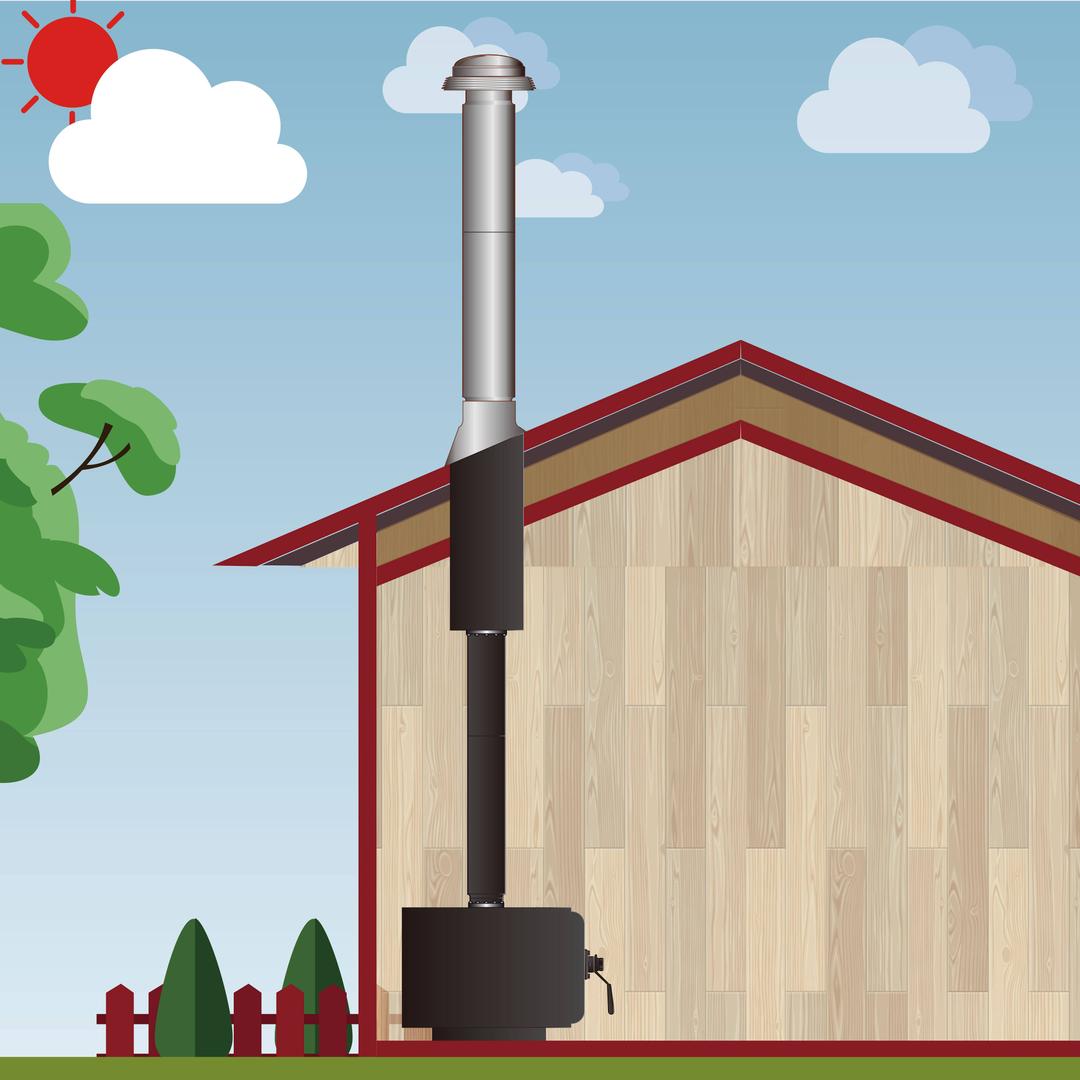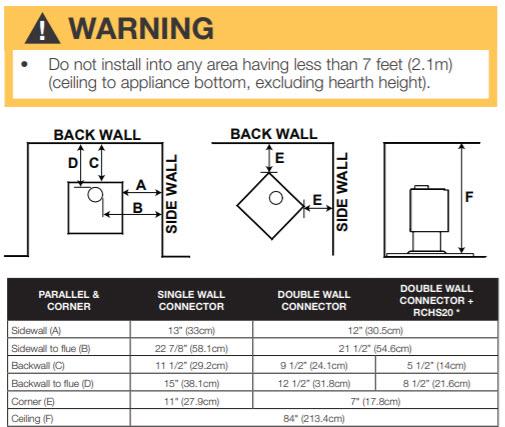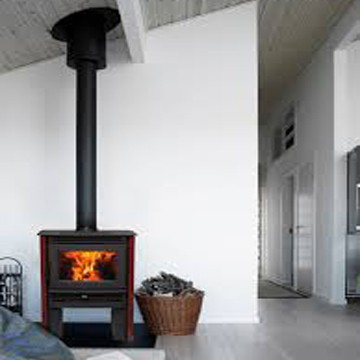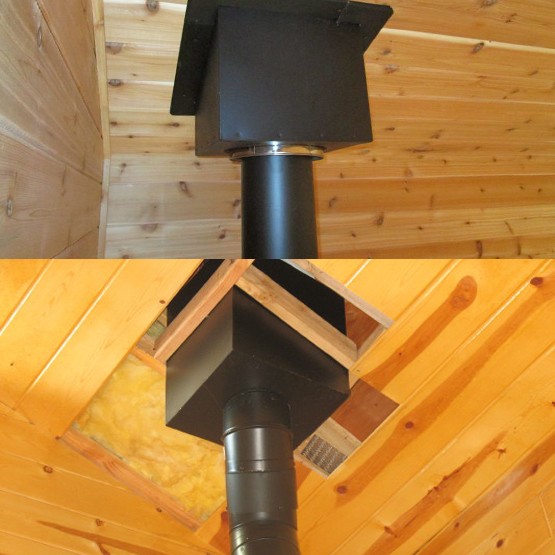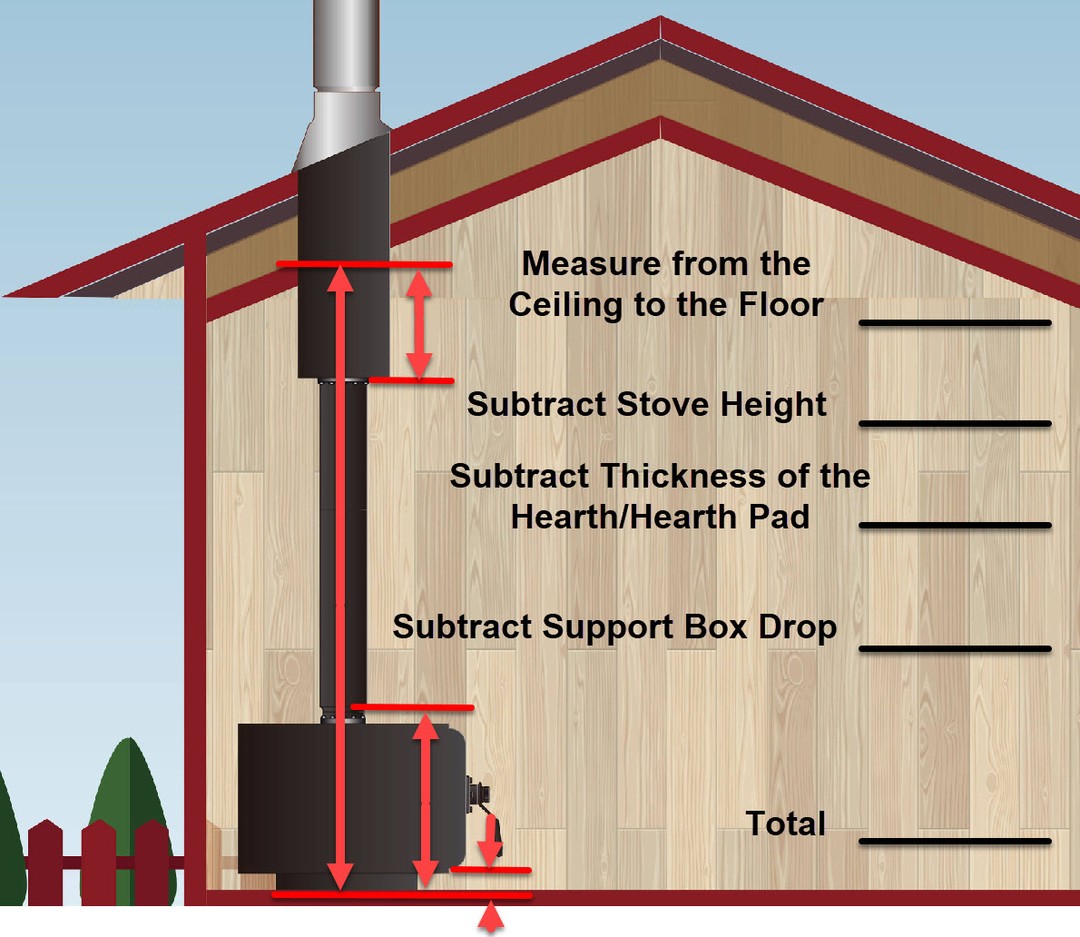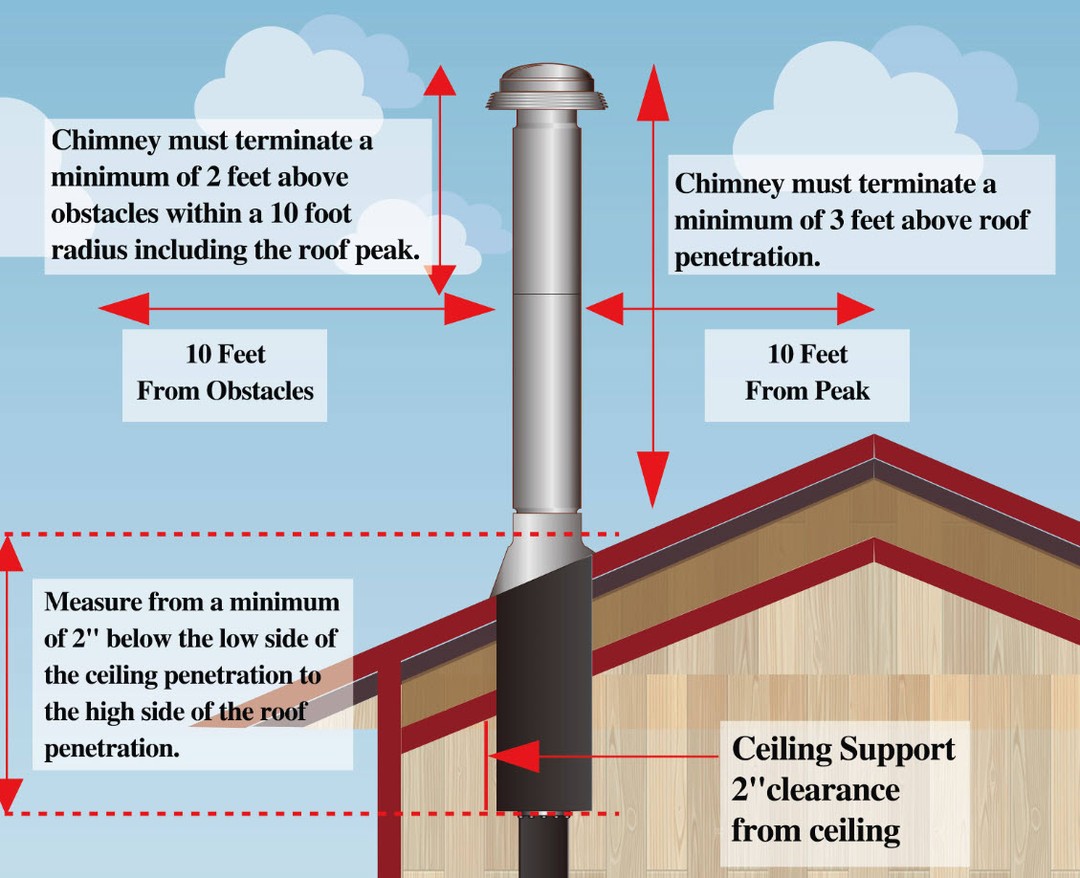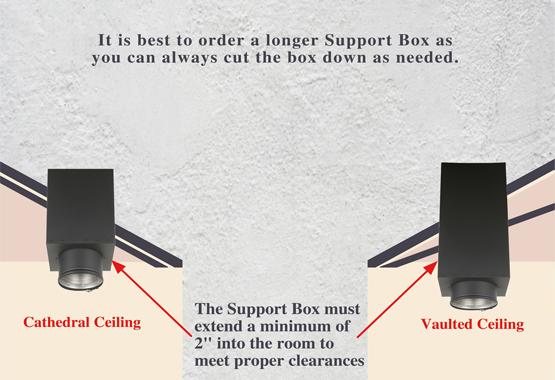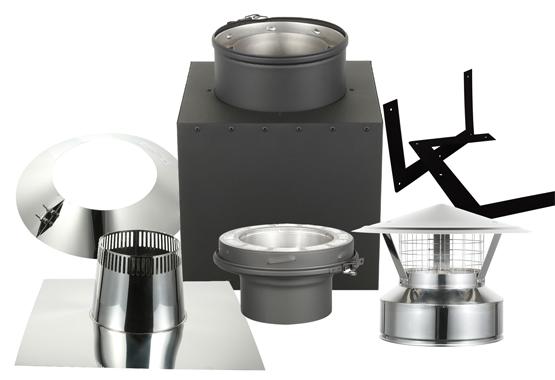Cathedral Ceiling Planning Guide
A Cathedral Ceiling is defined as a ceiling that has the same pitch as the roof. Not to be confused with a Vaulted Ceiling which is a ceiling that is pitched but the ceiling pitch does not match the pitch of the roof creating an attic space. For info on vaulted ceiling installations check out our Through The Attic Planning Guide.
Note: this guide is for educational purposes only and does not supersede the installation manual or your local building codes. Please consult with a professional chimney installer and your local code enforcement officials for specific installation requirements.
Cathedral ceilings in most residential homes will be constructed of 2x8 or 2x10 rafters spaced 16" or 24" on center. The lumber size and spacing depends on the load requirements so while this is common you may find your ceiling has larger rafters and shorter spacing.
The insulation in a cathedral ceiling is typically standard fiberglass insulation or closed cell foam (either sprayed in or in foam boards). You might also find baffles between the insulation and the roof decking.
Our Cathedral Ceiling Kit includes everything you need to safely pass our Class-A chimney pipe through the ceiling and out the roof.
The first step to installing any heating appliance, a wood stove for example, is to read the instruction manual for the appliance and pay particular attention to the required clearance to combustibles.
All heating appliances will have requirements that dictate where an appliance can be placed in a room. Things like:
- Distance from the back and side wall to the flue when parallel
- Distance from the back and side wall to the back of the wood stove when parallel
- Distance from the back wall or side wall to the corner of the wood stove when positioned in a corner
- Distance from the floor to ceiling (take note if you are installing on a hearth)
- There may be special requirements if the stove is to be installed in an alcove
- Floor protection is required if the stove is to be placed on a combustible material like carpet, vinyl, wood, etc.
Be sure to check the required clearances to walkways, doors (open and closed), windows, drapes, furniture and anything else in the area.
A common mistake is to forget to "look up". Make sure there are no lights or fixtures in the way above the appliance.
Single wall stove pipe requires a clearance three times the diameter of the pipe. For example a 6 inch single wall stove pipe requires 18 inches of clearance.
Things like fireplace mantels, ceiling fans, and beams can get in the way. All of this must be considered before you confirm your location for installation.
Once you have an idea of where you plan to install your heating appliance it's time to mark the spot on the ceiling where the chimney pipe will go.
Place your appliance where you would like it to go and double check your clearances to combustibles.
If you do not have the appliance yet mark out a space on the floor based on the appliance specs. Be sure to mark the center of the flue on the floor as well.
Using a plumb bob or laser find the spot on the ceiling that lines up with the center of the flue collar on the appliance and make a mark.
This is your tentative mark where the chimney will penetrate the ceiling. I say tentative because you may need to adjust it depending on where the rafters are located.
In a cathedral ceiling there is no attic space so you need to use a stud finder to find the rafters and mark their location.
If the center mark of the flue does not land in between two rafters you have two options.
1. you can reposition your stove so that it does line up between two rafters.
2. you can use an elbow offset in your stove pipe installation to jog around the rafters.
Note: It is always best to keep your chimney as straight as possible as this provides the best draft.
Our Square Ceiling Support Box for 6" chimney measures 12.2" x 12.2" and for 8" chimney measures 14.3" x 14.3". Both support boxes should fit between the rafters with room to spare so your mark does not need to be perfectly centered between the rafters but it does need to be centered enough for the support box to pass through the rafters.
Now that you've checked the clearances and confirmed the location of the appliance go ahead and take a measurement from the ceiling where the chimney will exit down to the floor.
To calculate how much single wall black stove pipe you will need for your installation subtract the height of the stove (measured from the bottom of the stove to the top of the flue collar) from the ceiling height. Don't forget to subtract any hearth or hearth pad that the stove will sit on.
Now subtract the distance that the ceiling support box will extend down into the home. The support box must extend a minimum of 2" below the low side of the ceiling to meet clearances. However, if you have a steep ceiling pitch it may be necessary to lower the support box even further into the home to meet the 18" clearance to the single wall stove pipe.
This measurement doesn't need to be exact because you can use one of our telescoping lengths of single wall stove pipe to make up for any needed adjustments.
Once you've made sure you have the required clearances for installation inside your home it's time to check out the roof.
First check the roof where you plan for your chimney to exit and make sure there are no obstructions like other chimney's, bathroom fan exhausts, electrical wires, trees, dormers, or other roofs.
Your chimney must terminate a minimum of 3 feet above the high side where the chimney penetrates the roof and a minimum of 2 feet above an obstacle within a 10 foot diameter of the chimney, including the roof itself.
This is known as the 3 foot, 10 foot, 2 foot rule.
Take a measurement to determine how much chimney pipe you will need above the roof. Remember to add another approximately two to three feet of pipe to go down into the support box.
You will also need to know the pitch of your roof to purchase the correct roof flashing. If you do not know the pitch of your roof you can easily measure it. All you need is a tape measure and a level that is at least 12" long.
- Measure 12" on your level and make a mark
- Hold the level against the roof so the mark is on the bottom of the level
- Measure from the roof up to the mark on the bottom of the level (while holding the level... level)
This measurement is known as the "rise". If, for example, the measurement is 8" then your roof rises 8" for every 12" of "run". This is known as a 8/12 pitch roof.
If your roof is extremely steep and getting on the roof to measure it is not an option you can do the exact same thing in reveres on the inside of the house against the ceiling since both the ceiling and the roof are the same pitch in a cathedral ceiling.
Right this down so you know what roof flashing to select when purchasing your kit.
The last thing you will need to determine is which Ceiling Support Box to purchase.
For cathedral ceilings you will need either a 24" or 36" ceiling support box.
The ceiling support box runs all the way through the ceiling up to the roof and is secured to the roof and rafters to support the weight of the chimney.
When choosing a ceiling support box it is best to choose a longer box rather than a shorter box as the box can always be cut down as needed.
The steeper the roof pitch the longer the support box you will need.
This completes our Cathedral Ceiling Planning Guide. You should have all the knowledge you need to purchase the single wall stove pipe and double wall Class-A insulated chimney pipe you need to install your heating appliance.
Below are links to the items you might need to complete your installation.

